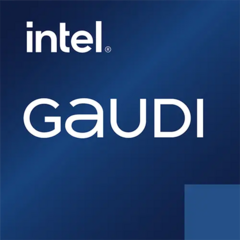Habana Intel Gaudi 2 96GB HBM2 - HL-225H
Graphics Engine: Gaudi BUS: PCIe 4.0 x16 Memory size: 96 GB Memory type: HBM2 Number of tensor cores: 24
| Product code | 214.167724 |
|---|---|
| Part number | HL-225H |
| Alternative Part No. | GPU-HL-007 |
| Supermicro Part No. | GPU-HL-225H-GD2 |
| Availability | Not in stock |
| Warranty | 24 months |
| Weight | 2 kg |
| The price includes all legal fees | |
Detailed information
Intel AI GPU
Intel steps into the AI realm with its advanced graphics cards, ensuring high performance at a value-conscious price point. Leveraging their extensive experience in processor manufacturing and in-house semiconductor development, Intel solutions offer a seamless blend of both worlds. As a relative newcomer to the AI accelerator market, Intel holds an advantage in terms of accessibility and a reasonable pricing strategy. This combination is further enhanced by ease of use and robust software support.
Floating point
Using the FLOPS unit, we can estimate the raw performance of graphics cards today. It indicates how many operations per second a graphics card can perform, allowing us to compare them against each other. However, these values can vary depending on the bit size of the floating-point (FP) representation. The larger the bit size, the more accurate the calculations, but also the fewer of them there are. Since gaming PCs need precise values for smooth operation, they mainly use 32-bit FP (or FP32). On the other hand, Deep Learning does not necessarily require such precise calculations, and therefore AI graphics cards use FP8. This drastically reduces the accuracy, but on the other hand increases the number of calculations.
Graphics memory
VRAM, these days primarily of GDDR type, is a synchronous memory, similar to standard RAM. However, in the case of graphic memory, memory chips with faster throughput and multiple data transfer rates are concerned. The result is a much faster buffering of data that the graphics card or coprocessor calculates and passes to the processor.
Passive
Passively cooled graphics cards do not have any powered moving components. They take advantage of optimized airflow, especially in a server environment, which takes heat away from the graphics unit outside of the case. Passive cooling is used especially for very powerful graphics coprocessors.
PCI Express
PCI Express is an interface that usually takes the form of an expansion slot to ensure the modularity of the entire system, whether it is GPU, network cards, controllers, M.2 drives or other expansion cards. It is true that the newer the generation and wider the interface, the higher the performance and throughput. Most modern graphics cards use 16 lanes to connect with the processor. Currently, the most up-to-date generation is PCI Express generation 6.0 with a speed of 7.5 GB/s per lane.
Parameters
| Product line | Gaudi |
|---|---|
| Architecture | Gaudi |
| Gigabytes of memory | 96 |
| Number of stream processors | ? |
| Memory type | HBM2 |
| Slot count | Unknown |
| Monitor output | Unknown |
| Profile | OCP |
| Interface | PCI-E 4.0 16x |
| Cooling type | Passive |
| Power consumption (W) | 600 |












